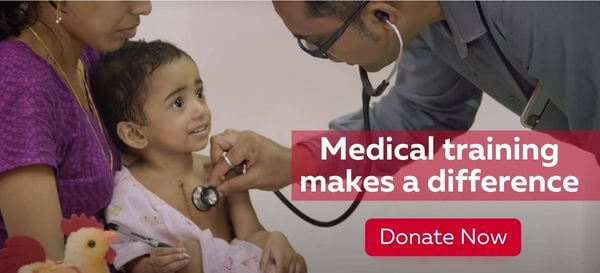Published May 22, 2023
Medical volunteers from the University of California San Francisco (UCSF) and Showa University in Japan joined clinicians in Hanoi, Vietnam in April 2023 for a week-long Children’s HeartLink training visit. National Children’s Hospital (NCH) hosted the volunteers as well as their peers from Nhi Dong 1 in Ho Chi Minh City, another Children’s HeartLink partner hospital.
In Vietnam, an estimated 10,000 children are born with congenital heart disease annually, and approximately 25% need surgery in the first year of life to survive. Only five pediatric cardiac programs in Vietnam offer surgery for infants, leaving at least half of these children without access to treatment.
Through the Children’s HeartLink partnership, NCH has been improving their pediatric cardiac care program with the help of medical volunteers from UCSF. Their mentorship has brought advanced cardiac treatments to the team, which is helping the local team save more children with heart disease.
Children’s HeartLink Country Director for Vietnam, Adriana Dobrzycka, brought back these wonderful photos to help us all see inside the training. Training visits like this one are made possible by Children’s HeartLink supporters and funders like Ping and Amy Chao Family Foundation and Transparent Fish Fund, who have been sponsoring our work in Hanoi since 2017.
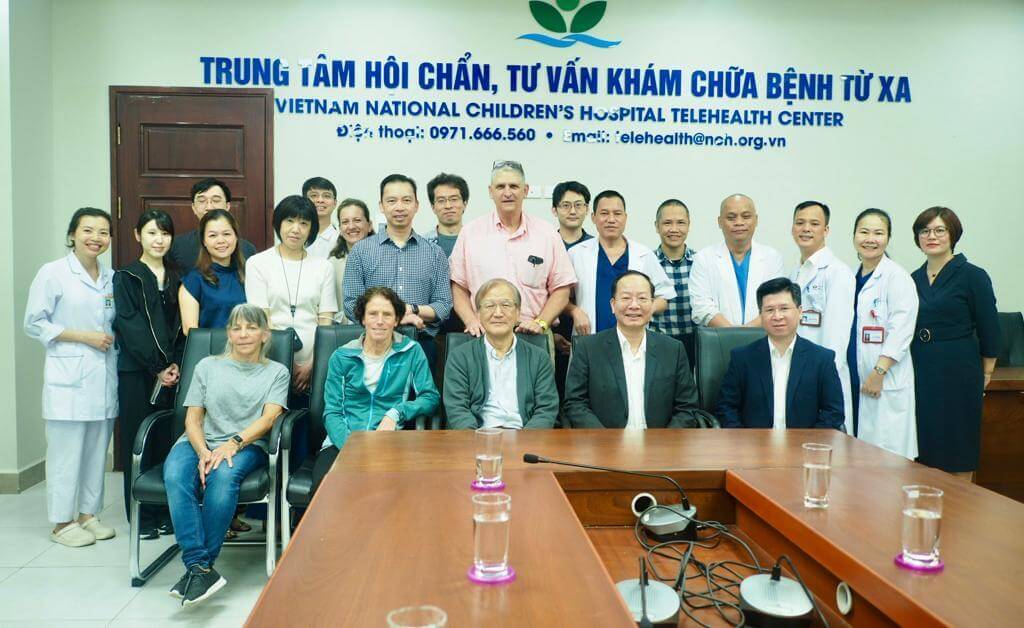 Members of the heart care team at NCH and volunteers from UCSF and Showa University pose for a picture before a welcome meeting.
Members of the heart care team at NCH and volunteers from UCSF and Showa University pose for a picture before a welcome meeting.
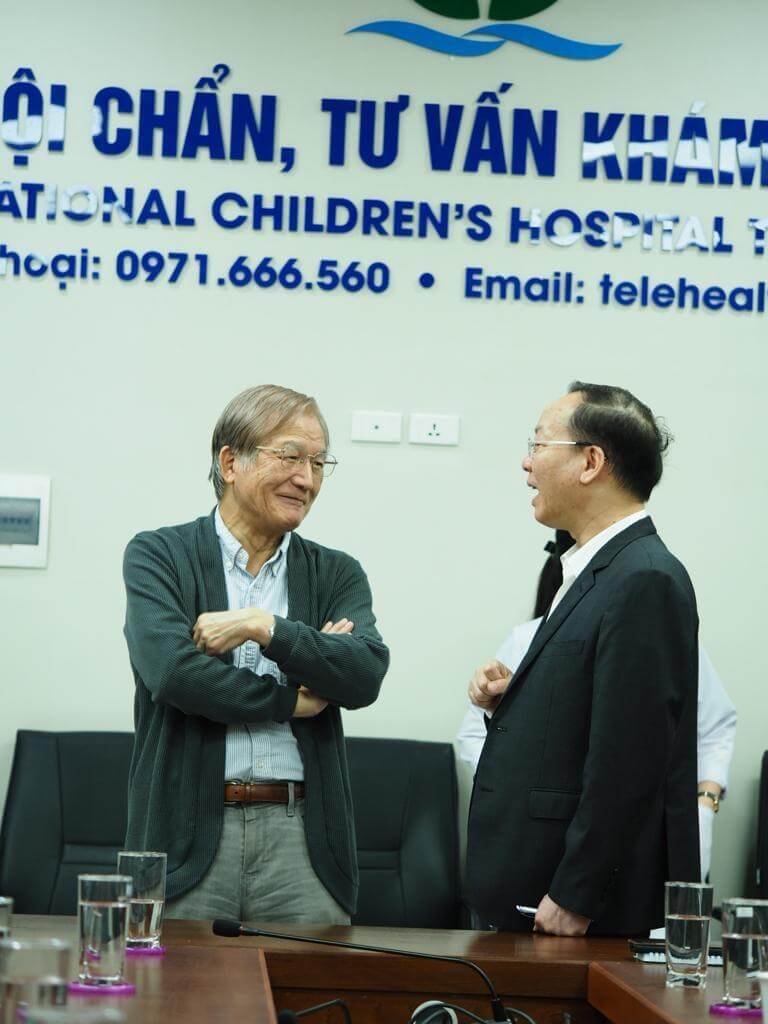 Dr. Shunji Sano speaks with Dr. Tran Minh Dien at the welcome meeting. Dr. Sano is a medical volunteer from Showa University in Japan. He was with UCSF when the Children’s HeartLink partnership began and continues to be the leader of the UCSF team. Dr. Dien is the hospital director at NCH.
Dr. Shunji Sano speaks with Dr. Tran Minh Dien at the welcome meeting. Dr. Sano is a medical volunteer from Showa University in Japan. He was with UCSF when the Children’s HeartLink partnership began and continues to be the leader of the UCSF team. Dr. Dien is the hospital director at NCH.
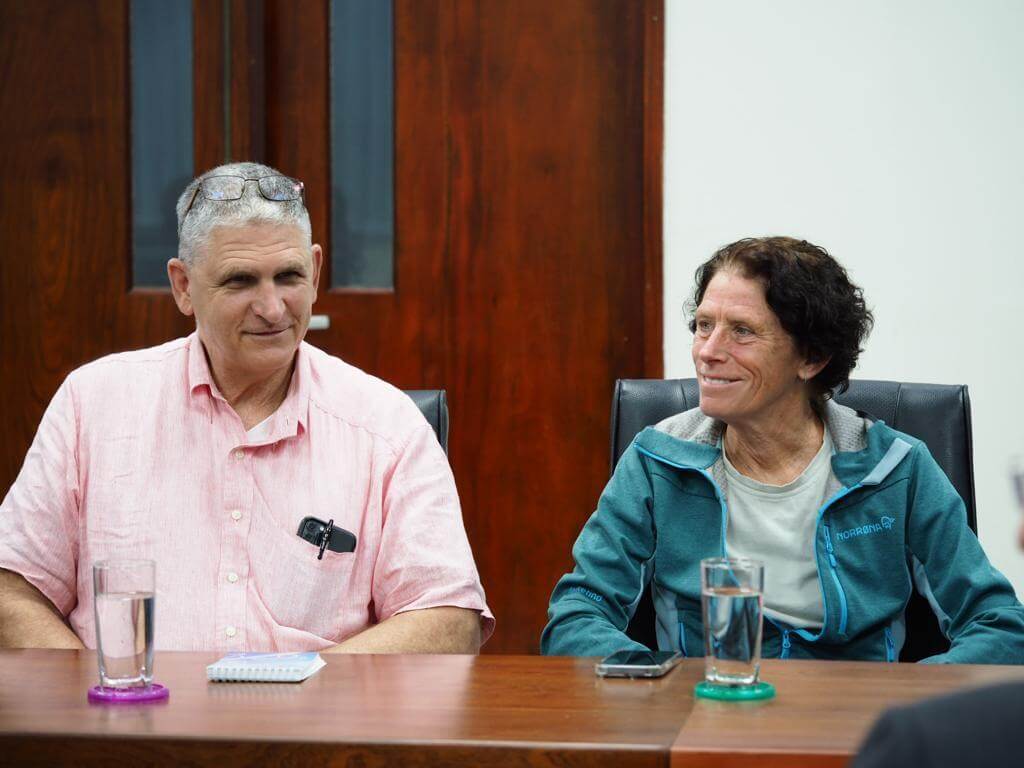 Medical volunteers from UCSF Dr. Mark Cocalis and Dr. Sarah Tabbutt during the welcome meeting.
Medical volunteers from UCSF Dr. Mark Cocalis and Dr. Sarah Tabbutt during the welcome meeting.
 The group gathered early in the week to discuss the cases of children with heart disease that could be operated on during the training visit.
The group gathered early in the week to discuss the cases of children with heart disease that could be operated on during the training visit.
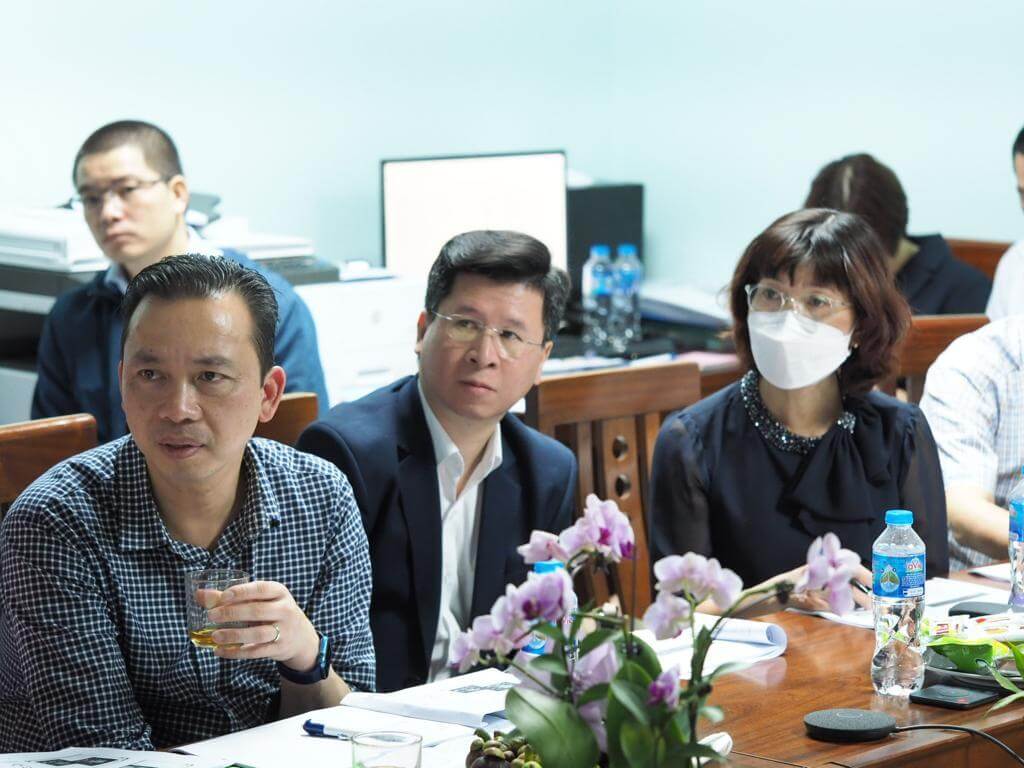 Dr. Hung Nguyen (left), an anesthesiologist from UCSF, sits next to Dr. Tung Cao, who is the vice director of NCH and a pediatric cardiologist by training. Next to him is Dr. Thoi Ngo, the senior pediatric cardiac surgeon from Children’s HeartLink partner hospital Nhi Dong 1 in Ho Chi Minh City.
Dr. Hung Nguyen (left), an anesthesiologist from UCSF, sits next to Dr. Tung Cao, who is the vice director of NCH and a pediatric cardiologist by training. Next to him is Dr. Thoi Ngo, the senior pediatric cardiac surgeon from Children’s HeartLink partner hospital Nhi Dong 1 in Ho Chi Minh City.
 The teams weighed in on diagnoses while the patient’s diagnostic data was displayed on the screen. Discussions were taken a step further with a 3D representation — presented by Dr. Hirofumi Seo, CEO and president at SCIEMENT Inc. — that could be studied to enhance insight regarding the heart defect. The clinicians in the room were captivated by these visuals that could be manipulated for them to better understand the anatomy of the heart defect and plan for the child’s heart repair.
The teams weighed in on diagnoses while the patient’s diagnostic data was displayed on the screen. Discussions were taken a step further with a 3D representation — presented by Dr. Hirofumi Seo, CEO and president at SCIEMENT Inc. — that could be studied to enhance insight regarding the heart defect. The clinicians in the room were captivated by these visuals that could be manipulated for them to better understand the anatomy of the heart defect and plan for the child’s heart repair.
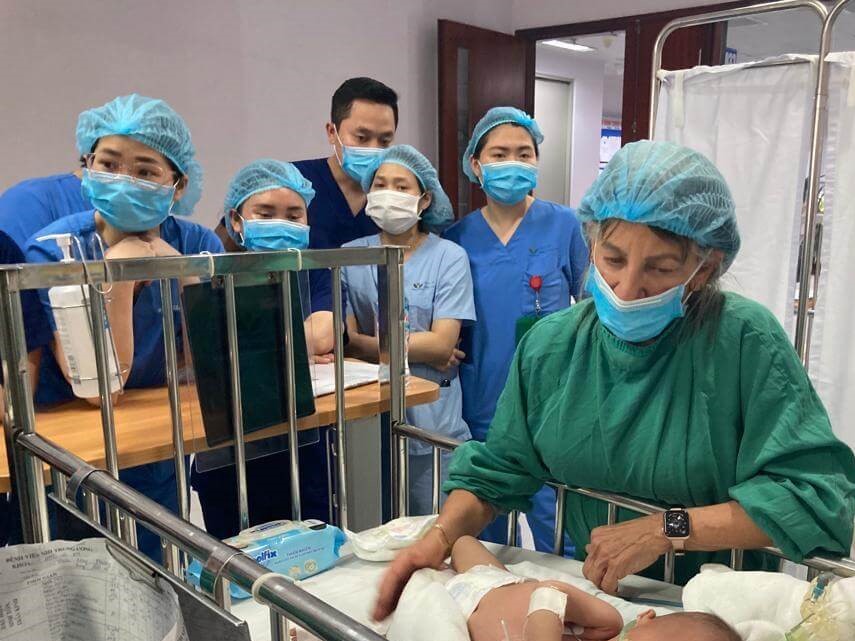 Helen Busch, intensive care unit (ICU) nurse from UCSF, bedside during nursing rounds for children with heart disease at NCH.
Helen Busch, intensive care unit (ICU) nurse from UCSF, bedside during nursing rounds for children with heart disease at NCH.
 During nursing rounds, the teams listen intently to an interpreter as they discuss patient cases.
During nursing rounds, the teams listen intently to an interpreter as they discuss patient cases.
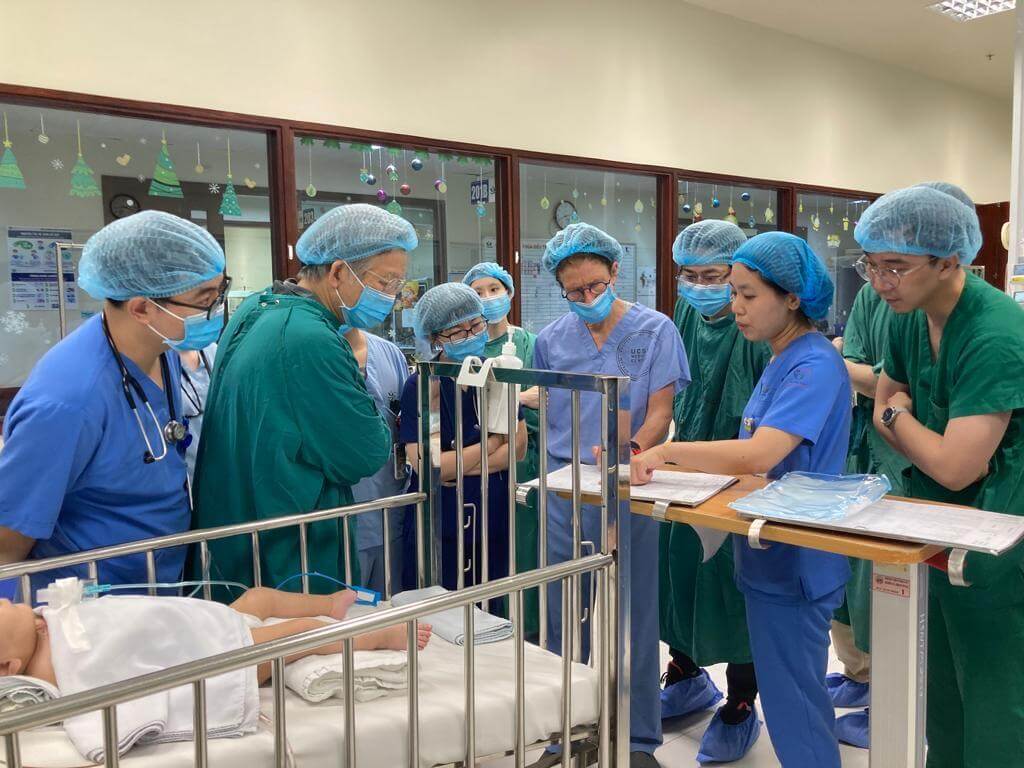 Dr. Chi (second from right) presenting a patient during rounds to Dr. Tabbutt from UCSF (fourth from right) and Dr. Sano (second from left).
Dr. Chi (second from right) presenting a patient during rounds to Dr. Tabbutt from UCSF (fourth from right) and Dr. Sano (second from left).
 Case presentations are made by various members of the team at NCH.
Case presentations are made by various members of the team at NCH.
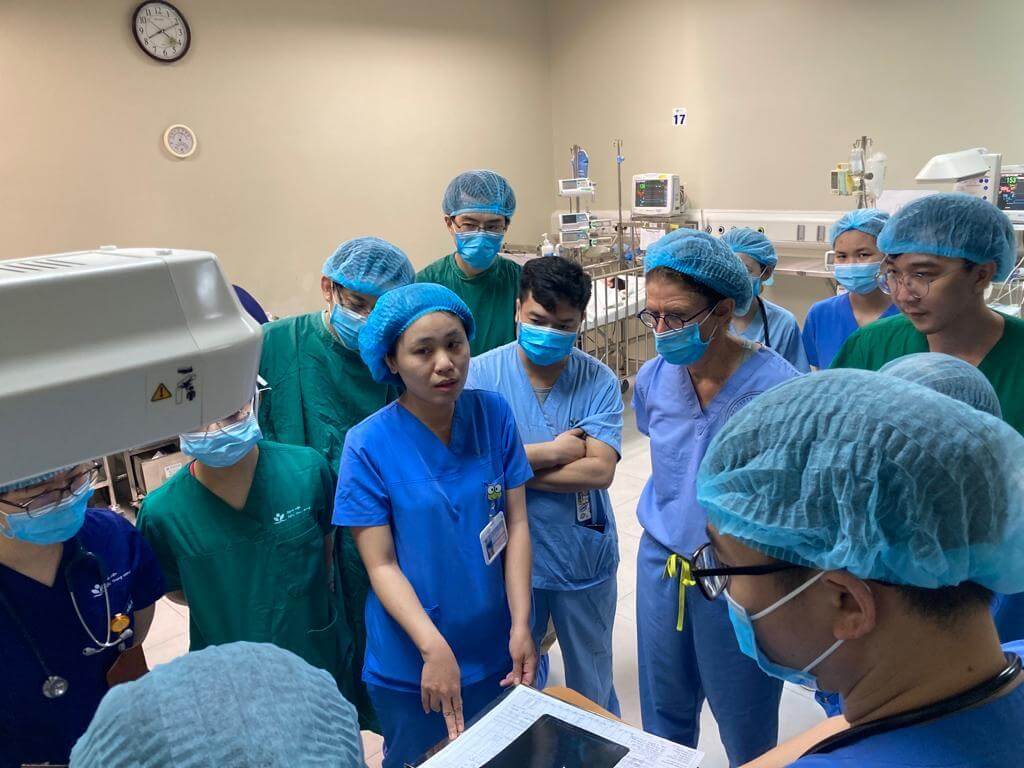 One of several rooms of the post-operative ICU at NCH. Here Dr. Chi is presenting the patient to Dr. Tabbutt during morning rounds.
One of several rooms of the post-operative ICU at NCH. Here Dr. Chi is presenting the patient to Dr. Tabbutt during morning rounds.
What happens on a Children’s HeartLink training visit
Every medical training visit is unique and designed with the country and hospital’s needs in mind. Some Children’s HeartLink visits may focus on a surgical technique, others on nursing practices and others on taking a team approach to fixing a specific heart defect.
With each training visit comes a chance for clinicians in underserved countries to solidify the foundations of pediatric cardiac care and elevate local expertise while addressing and improving methods used in screening, treating, repairing and caring for more children with congenital heart disease. This is an urgent need because 1 in 100 children is born with heart disease globally, and 90% of them lack access to the lifesaving care they need.
All members of the heart care team benefit from these trainings as they learn to communicate and collaborate more efficiently and ultimately save more children with congenital heart disease.
This is the foundation of our train-the-trainer model. Medical volunteers instill and elevate expertise while improving multidisciplinary teams, so clinicians can improve upon techniques, save more children and pass on the professional knowledge to more medical professionals into the next generation.